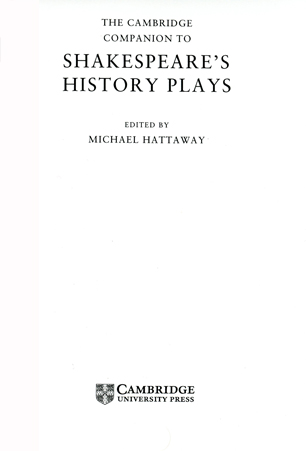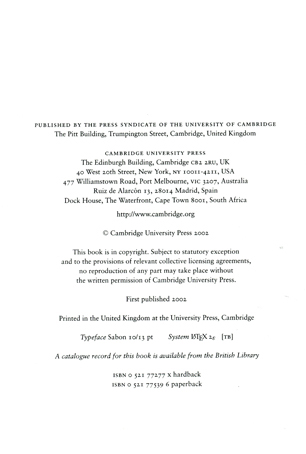Exercise 3: A Chapter or Article in a Book
Another common type of source you will encounter is an article in an edited collection of essays. When citing the article for the first time, you must give details of the article itself (its author, title, page span) and of the book it appears in (the book's title, editor, and publication details). This information takes the following form:
- Name of the article's author (followed by a comma)
- Title of the article (enclosed in single quotation marks, in full, with all principal words capitalised; followed by a comma and 'in')
- Title of the book (in italics, in full, with all principal words capitalised; followed by a comma)
- Editor's name(s) (preceded by 'ed. by')
- Details of publication in parentheses (place of publication: publisher, date)
- First and last page numbers of the article (preceded by a comma and 'pp.')
- Page number(s) of the particular reference you are citing (in parentheses; preceded by 'p.' or 'pp.'; followed by a full stop)
For instance, if I quoted text from page 88 of the following article, the footnote would be presented as:
Gerald Lynch, 'Religion and Romance in Mariposa', in Stephen Leacock: A Reappraisal, ed. by David Staines (Ottawa: University of Ottawa Press, 1986), pp. 83-96 (p. 88).
Exercise
The article:

Which is contained in the following edited collection of essays:


For this exercise, imagine you wanted to cite page 39 of this article.
Correct footnote:
Your footnote above should look like this:A. J. Hoenselaars, 'Shakespeare and the Early Modern History Play', in *The Cambridge Companion to Shakespeare's History Plays*, ed. by Michael Hattaway (Cambridge: Cambridge University Press, 2002), pp. 25-40 (p. 39).In your own work, the same footnote would look like this:
A. J. Hoenselaars, 'Shakespeare and the Early Modern History Play', in The Cambridge Companion to Shakespeare's History Plays, ed. by Michael Hattaway (Cambridge: Cambridge University Press, 2002), pp. 25-40 (p. 39).
Comment:
Note an author's initials should always be separated by a space; so here 'A. J.' not 'A.J.'
Where a quotation appears in an article's title, it should be placed in quotation marks, e.g.:
Richard Beadle, '"I wol nat telle it yit": John Selden and a Lost Version of the Cook's Tale', in Chaucer to Shakespeare: Essays in Honour of Shinsuke Ando, ed. by Toshiyuki Takamiya and Richard Beadle (Cambridge: D. S. Brewer, 1992), pp. 55-66.
Note also that you should not change the capitalisation of a quotation when it's given in a title.

